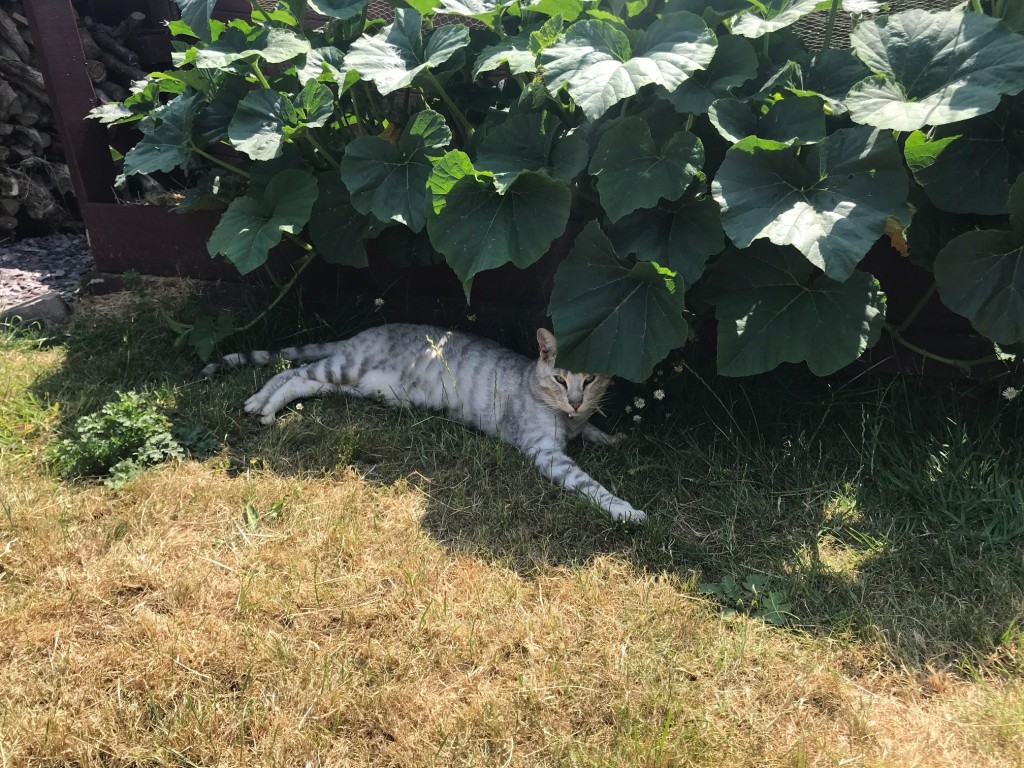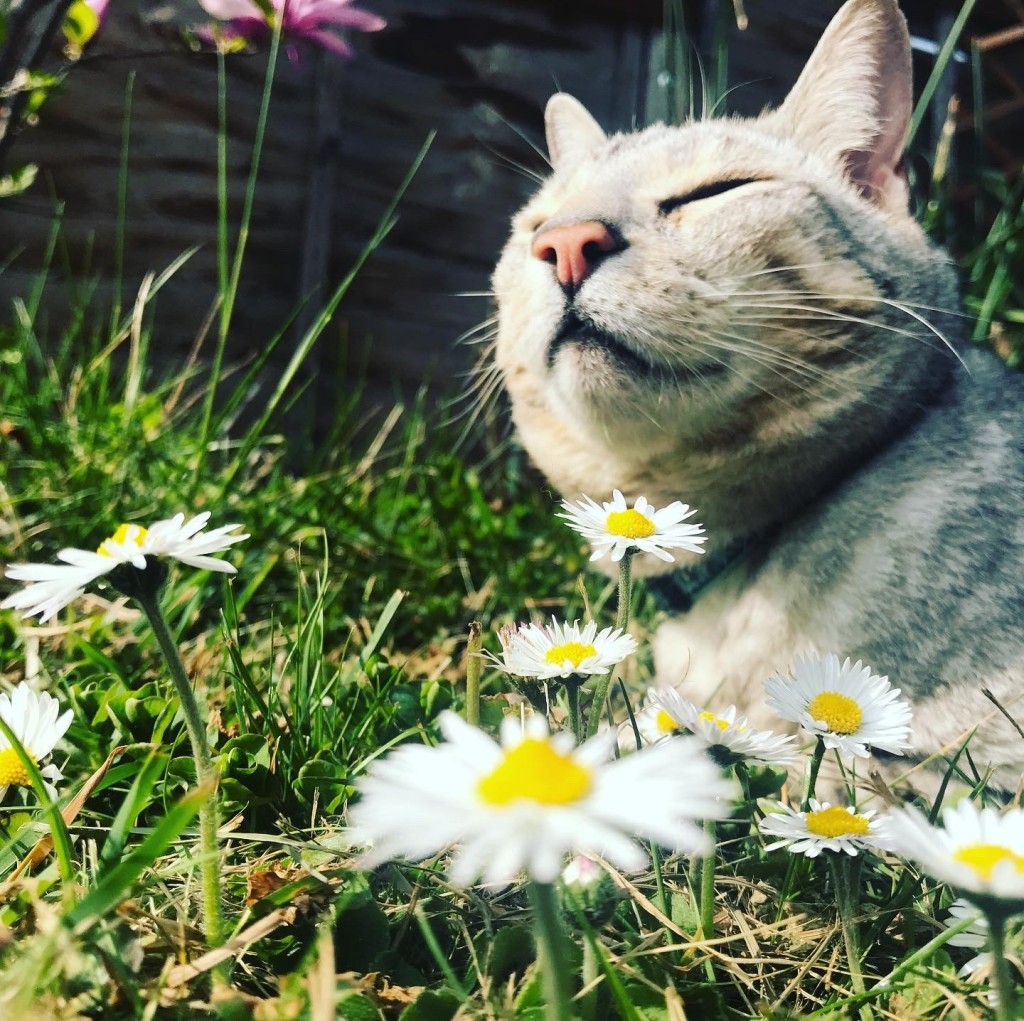Yes you read that right, Emily’s inner crazy cat lady has been unleashed for today so we’re talking about frazzled felines for a change!
Can cats get heatstroke?
In a word, YES! Any animal can develop heatstroke, we just tend to think about dogs and horses because they are the animals most frequently featured in the news, and we exercise and travel with these species meaning they are more commonly put in a situation that can result in over-heating. Whilst cats tend to be heat-seekers – lying on radiators, in patches of sunlight and in front of fires – they too can find themselves in trouble in hot weather.
Which cats are at risk?
One of the most serious risks to cats in hot weather is becoming trapped somewhere hot. The majority of UK cats enjoy a free roaming indoor-outdoor lifestyle, meaning they can seek out warm areas to sleep such as greenhouses, sheds and conservatories. If they fall asleep and find themselves trapped, just like dogs in hot cars they will struggle to control their body temperature and develop heatstroke if they cannot escape.
Older cats, just like dogs and humans, are likely to be at greater risk of heatstroke. Any underlying health conditions like obesity, heart disease, thyroid disease, kidney disease or breathing disorders will make it harder for them to cool down. Dehydration is particularly dangerous in hot weather, and older cats may be less inclined to drink so encouraging fluid intake is really important (see below) in hot weather.
There are rare reports of cats developing heat-related illness from hunting behaviour, chasing birds that have entered a hot house or apartment for example, but unlike dogs exercise is far less likely to cause a problem to cats, as they’re (mostly) not stupid enough to run around in the heat.
Cats will develop heatstroke if trapped, or travelling in a hot car. So if you do need to travel with your cat for any reason ensure you are prepared to keep them cool during the journey:
- Consider packing ice packs/frozen water bottles that can be wrapped in a towel to provide a cooling mechanism
- Make sure you can create shade from the sun
- Have access to water and a water bowl if there is a chance the journey could be long or delayed due to traffic
- Ideally travel in the cooler parts of the day
- If you don’t have air conditioning, ensure your cat is restrained in an appropriate carrier so the windows can be opened
Keeping hot cats cool
Keeping your cat hydrated is one key thing you can do to help them in hot weather. Cats are very particular about what they drink, so it’s worth being aware of your cat’s preference for water type, bowl type and location, and considering how they access their water.
Simply adding a few extra water bowls to different locations around the house and garden can help to improve your cat’s water intake, especially if you have an older cat or a cat with mobility problems. If you have multiple cats in your household then ensuring they have water bowls to spare is essential. Consider where you position the water bowls, easy access is important if your cat struggles to jump, and distance from food bowls and litter trays is important.
You can add ice cubes to your cat’s water bowl, but consider adding them to an additional bowl just in case your cat decides they don’t like them. If your cat has dental disease ice water may actually stop them from drinking (Emily knew Leo needed a dental when he stopped wanting to eat his ice cream). Some cats may enjoy using an ice cube as a toy.
Water fountains can be great for encouraging fussy cats to drink, Leo the cat definitely prefers running water so this was about 30 seconds after Emily first set up his water fountain:

Prior to the water fountain Leo would ask to have the tap put on so he could drink straight from the spout:

There are some liquid diets for cats that may help to increase fluid intake, Leo received this one as a free sample in the post and he was VERY impressed. You can also consider freezing liquid foods and treats like this to provide a cooling snack to keep your cat entertained.

Shaded areas in gardens are ideal places for cats to keep cool, if your cat is indoor only then stone floors or cooling mats can provide ideal cool locations for them to chill if it gets too hot. Some cats will seek out cooler places to nap, and may even tolerate ice packs/frozen water bottles wrapped in a towel to cool their toes.

Cats are particularly prone to sunburn and can develop skin cancer as a result, so if you have a cat with pink ears like Leo, consider using feline sunscreen to keep them safe when sunbathing.
How to spot signs of heatstroke in cats
The signs of heatstroke in cats are very similar to those in dogs as the underlying disease process is the same. If you are at all concerned about your cat you should contact your vet immediately, just like dogs the sooner your cat is treated the more likely it is they will survive.
Early signs may include:
- Panting – open mouth breathing in cats is NOT NORMAL and should alert you that something is not right
- Excessive sleepiness and confusion – we all know cats like to sleep but if you are struggling to wake them, or they are not responding normally to things like treats or fuss this can be a sign of over heating
More serious signs include:
- Vomiting
- Diarrhoea
- Passing vomit or diarrhoea with blood
- Becoming wobbly and uncoordinated
- Fitting (seizuring)
- Losing consciousness
A cat’s normal body temperature is 36.7–38.9°C, so if your cat has collapsed and you can check their temperature, anything over 40-41°C warrants active cooling. Move them away from the heat into the shade, use water to wet their coat and feet and use air movement (fans or air conditioning) and get them to your vet as soon as possible.
Leo and most of the cats at the animal unit at Brackenhurst have temperature sensing microchips so that Emily can monitor their temperature and these can be handy for detecting early problems, but a rectal temperature should be checked if your cat is unwell.

Finally, heatstroke is far less common in cats than it is in dogs. Cats are smaller, which helps with heat loss, and cats are rarely dragged out on walks during the hottest part of the day! In particularly hot weather you may want to consider keeping your cat indoors to reduce the chances of them becoming trapped somewhere hot, but most cats are probably enjoying the current hot weather, and looking blissfully relaxed whilst doing so.

